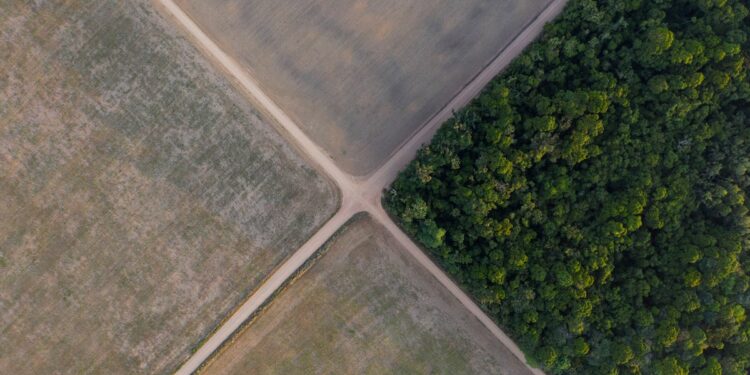Countries will need close to 3 billion acres (1.2 billion hectares) of land to fulfill their current climate pledges, thanks to their focus on techniques like planting new trees over tougher but less land-intensive methods of reducing greenhouse gasses, a report released Tuesday finds. That’s roughly half the amount currently used for all global agriculture and a bigger area than the entire United States.
The Intergovernmental Panel on Climate Change makes it clear that, in order to keep catastrophic warming in check, the world will not only need to stop using fossil fuels but also draw carbon dioxide that we’ve already out of the atmosphere. In recent years, techniques like carbon dioxide removal (CDR) and carbon sequestration using natural resources—planting trees, maintaining forests, and restoring wetlands—have risen in popularity. But the focus on these methods means the world’s powers may be ignoring making other hard changes, like actually decreasing our fossil fuel reliance at the rate we need. This new report suggests that that may indeed be the case.
The report, created by 20 researchers from around the world as part of a climate initiative out of the University of Melbourne, focuses on what is known as countries’ nationally determined contributions, or NDCs—the specifics of how nations plan to reduce emissions in line with the Paris Agreement. It represents the first time that total land needs from all countries’ NDCs have been calculated in a group. It also took into account other forms of emissions reduction pledges countries have made.
“There has been a lot of interest in the scale of CDR in net-zero pledges from corporations and governments, but this has never been quantified in terms of land area across pledges from all countries,” Kate Dooley, a research fellow at the University of Melbourne’s Climate & Energy College and one of the lead authors of the report, said in an email. “So far we don’t know how much land countries are expecting to use to meet their net-zero goals.”
There were lots of numbers to crunch in prepping this report, thanks to how variable NDCs can look. Dooley explained that, sometimes, targets for removals in NDCs are calculated in land area—say, a promise to reforest a certain number of acres. More often than not, however, countries calculate their emissions using sequestration goals in tonnes of CO2 removed through certain activities, which meant running numbers using land-use activity, carbon dioxide removal factors, and other metrics.
The Canadian Down & Feather Company can check a few people off your holiday shopping list: cozy connoisseurs or family who just need better sleep.
“We had to do a lot of different calculations to work out land area,” Dooley said.
The end result of all that math shows that countries are going about carbon sequestration all wrong. Rather than planting new forests or morphing Indigenous land into tree plantations, the report finds, countries should concentrate on protecting old-growth forests—which store more carbon than younger trees—as well as protecting and strengthening the rights of Indigenous people (multiple studies have shown that Indigenous communities are consistently more successful in safeguarding forests than governments are). Food systems that make more sustainable use of the land and protect biodiversity rather than industrial agriculture can also help.
“Countries know this is not what the priority should be for taking action on climate change,” Dooley said. “But the countries that tend to do this are fossil fuel exporting countries (Australia, Saudi, Russia), or wealthy high-emitting countries that don’t want to decarbonize fast enough (UK, USA).”
On top of countries’ pledges, there’s also the private sector to consider when talking about land use. In recent years, consumers are increasingly presented with options to neutralize their polluting purchases or offset their carbon-intensive habits; a growing number of companies offer services to plant trees for everything from airline tickets to clothes. The industrialization of offsets, Indigenous leaders said at a press conference on the new report this week, is putting Indigenous land “under constant threat” as companies grab resources for tree planting.
All land use, as the report points out, is not created equal. And, unfortunately for tree boosters, the study makes it clear that we can’t plant our way out of this.
“The science is clear that the focus must be on peaking global emissions as soon as possible, and rapid emissions reductions to achieve a balance,” Dooley said. “Not scaling up land-based removals to achieve a balance.”





